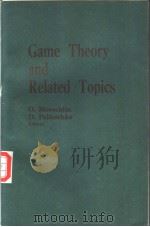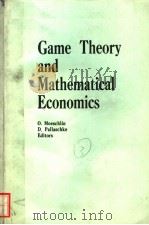《Game Theory and the Law》
| 作者 | Douglas Baird 编者 |
|---|---|
| 出版 | Harvard University Press |
| 参考页数 | 330 |
| 出版时间 | 1998(求助前请核对) 目录预览 |
| ISBN号 | 9780674341111;0674341112 — 求助条款 |
| PDF编号 | 813694908(仅供预览,未存储实际文件) |
| 求助格式 | 扫描PDF(若分多册发行,每次仅能受理1册) |
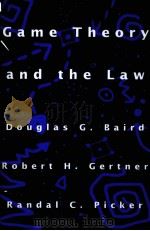
Introduction: Understanding Strategic Behavior1
Bibliographic Notes4
1 Simultaneous Decisionmaking and the Normal Form Game6
The Normal Form Game6
Using Different Games to Compare Legal Regimes14
The Nash Equilibrium19
Civil Liability, Accident Law, and Strategic Behavior24
Legal Rules and the Idea of Strict Dominance28
Collective Action Problems and the Two-by-Two Game31
The Problem of Multiple Nash Equilibria35
Summary46
Bibliographic Notes46
2 Dynamic Interaction and the Extensive Form Game50
The Extensive Form Game and Backwards Induction50
A Dynamic Model of Preemption and Strategic Commitment57
Subgame Perfection63
Summary75
Bibliographic Notes77
3 Information Revelation, Disclosure Laws, and Renegotiation79
Incorporating Beliefs into the Solution Concept80
The Perfect Bayesian Equilibrium Solution Concept83
Verifiable Information, Voluntary Disclosure, and the Unraveling Result89
Disclosure Laws and the Limits of Unraveling95
Observable Information, Norms, and the Problem of Renegotiation109
Optimal Incentives and the Need for Renegotiation112
Limiting the Ability of Parties to Renegotiate116
Summary118
Bibliographic Notes119
4 Signaling, Screening, and Nonverifiable Information122
Signaling and Screening122
Modeling Non verifiable Information125
Signals and the Effects of Legal Rules142
Information Revelation and Contract Default Rules147
Screening and the Role of Legal Rules153
Summary156
Bibliographic Notes157
5 Reputation and Repeated Games159
Backwards Induction and Its Limits159
Infinitely Repeated Games, Tacit Collusion, and Folk Theorems165
Reputation, Predation, and Cooperation178
Summary186
Bibliographic Notes186
6 Collective Action, Embedded Games, and the Limits of Simple Models188
Collective Action and the Role of Law189
Embedded Games191
Understanding the Structure of Large Games195
Collective Action and Private Information202
Collective Action Problems in Sequential Decisionmaking208
Herd Behavior213
Summary217
Bibliographic Notes217
7 Noncooperative Bargaining219
Modeling the Division of Gains from Trade219
Legal Rules as Exit Options224
Bargaining and Corporate Reorganizations232
Collective Bargaining and Exit Options237
Summary241
Bibliographic Notes241
8 Bargaining and Information244
Basic Models of the Litigation Process244
Modeling Separate Trials for Liability and Damages251
Information and Selection Bias260
Discovery Rules and Verifiable Information261
Summary266
Bibliographic Notes266
Conclusion: Information and the Limits of Law268
Notes275
References289
Glossary301
Index319
1998《Game Theory and the Law》由于是年代较久的资料都绝版了,几乎不可能购买到实物。如果大家为了学习确实需要,可向博主求助其电子版PDF文件(由Douglas Baird 1998 Harvard University Press 出版的版本) 。对合法合规的求助,我会当即受理并将下载地址发送给你。
高度相关资料
-

- PALTO‘MODERN ENEMIES AND THE THEORY OF NATURAL LAW
- 1953 THE UNIVERSITY OF CHICAGO PRESS
-

- PAPERS IN GAME THEORY
- D.REIDEL PUBLISHING COMPANY
-

- Game theory and economic modelling
- 1990 Clarendon Press
-
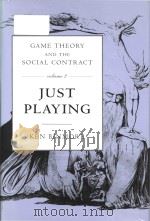
- Game theory and the social contract Volume 2 Just Playing
- 1998 MIT Press
-

- Dynamic noncooperative game theory
- 1982 Academic Press
-
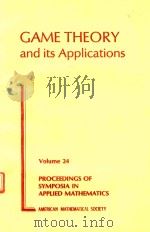
- GAME THEORY AND ITS APPLICATIONS
- 1981 AMERICAN MATHEMATICAL SOCIETY
-

- Game Theory Third Edition
- 1995 Acadmic Press
-

- Game Theory in the Social Sciences Concepts and Solutions
- 1984 The MIT Press
-

- MATHEMATICAL INTRODUCTION TO LINEAR PROGRAMMING AND GAME THEORY
- 1989 SPRINGER-VERLAG NEW YORK INC.
提示:百度云已更名为百度网盘(百度盘),天翼云盘、微盘下载地址……暂未提供。➥ PDF文字可复制化或转WORD

